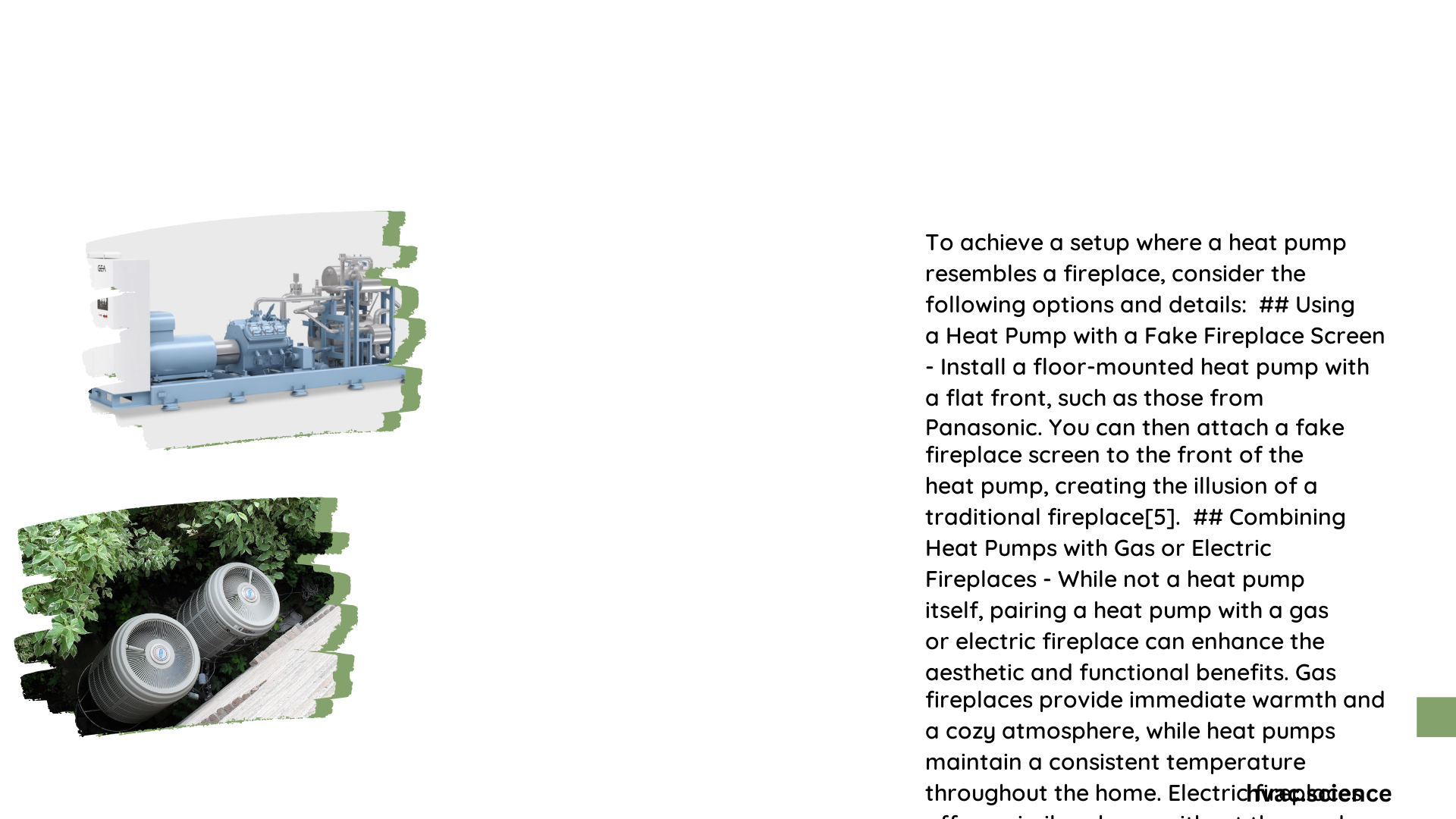A heat pump that looks like a fireplace combines the aesthetic appeal of a traditional hearth with the energy efficiency of modern heating technology. This innovative solution offers homeowners the best of both worlds: the cozy ambiance of a fireplace and the consistent, cost-effective heating of a heat pump. These systems typically consist of a gas fireplace unit paired with a separate heat pump, working in tandem to provide optimal comfort and efficiency.
What Are the Key Features of a Heat Pump That Looks Like a Fireplace?
Heat pumps that resemble fireplaces are not single units but rather a combination of two distinct systems:
- Gas Fireplace: Provides the visual appeal and instant heat
- Heat Pump: Offers efficient, consistent heating throughout the space
Gas Fireplace Features:
- Dimensions typically range from 24 to 48 inches in width
- Heights usually around 24 inches
- Clean face designs with full firebox flames
- Decorative elements like log sets and trim options
- Materials may include porcelain reflective panels and Black Illusion glass
Heat Pump Features:
- Separate unit, not integrated into the fireplace
- Dimensions vary, but generally 67-150cm (height) x 85-110cm (width) x 33-50cm (depth)
- Provides consistent, energy-efficient heating
How Efficient Are These Hybrid Heating Systems?

The efficiency of a heat pump that looks like a fireplace comes from the combination of two technologies:
- Gas Fireplace Efficiency:
- Measured in BTUs (British Thermal Units)
-
Can provide up to 27,000 BTUs of instant heat
-
Heat Pump Efficiency:
- Rated using SEER (Seasonal Energy Efficiency Ratio) and HSPF (Heating Seasonal Performance Factor)
- High-efficiency models can achieve SEER ratings of 20-25 and HSPF of 10-13
The combined system offers:
– Quick, strong heat from the gas fireplace when needed
– Steady, efficient temperature maintenance from the heat pump
– Potential for significant energy savings, especially in colder months
What Are the Installation Requirements for This System?
Installing a heat pump that looks like a fireplace involves two separate processes:
Gas Fireplace Installation:
- Professional expertise required
- Tools needed: level, wrenches, safety gear
- Installation time: several hours to a full day
- Must comply with local building codes
- Specific clearance requirements (e.g., 16 inches from fireplace opening for hearth)
Heat Pump Installation:
- Specialized tools and expertise needed
- Installation time: several hours to a few days
- Must meet local building codes and regulations
- Proper placement and electrical connections crucial
What Benefits Does This Hybrid System Offer?
- Aesthetic Appeal:
-
Provides the visual comfort of a traditional fireplace
-
Versatile Heating:
- Instant warmth from gas fireplace (up to 27,000 BTUs)
-
Consistent, efficient heating from heat pump
-
Energy Efficiency:
- Combines quick heat of gas with long-term efficiency of heat pump
-
Potential for lower overall energy consumption
-
Environmental Impact:
-
Reduced carbon footprint compared to traditional heating methods
-
User Satisfaction:
- Cozy atmosphere of a fireplace
- Reliable, consistent heating throughout the space
How Does This System Compare to Traditional Heating Methods?
| Feature | Heat Pump + Fireplace | Traditional Heating |
|---|---|---|
| Aesthetic Appeal | High (fireplace visual) | Varies |
| Energy Efficiency | High (combined technologies) | Generally lower |
| Instant Heat | Yes (gas fireplace) | Depends on system |
| Consistent Heating | Yes (heat pump) | Varies |
| Environmental Impact | Lower carbon footprint | Generally higher |
| Installation Complexity | Higher (two systems) | Varies |
What Should Homeowners Consider Before Installation?
- Space Requirements:
- Adequate room for both fireplace and heat pump units
-
Proper ventilation for gas fireplace
-
Cost Considerations:
- Initial installation costs for two systems
-
Potential long-term savings on energy bills
-
Maintenance Needs:
- Regular servicing for both gas fireplace and heat pump
-
Ensure proper functioning of both units for optimal efficiency
-
Climate Suitability:
- Heat pump efficiency may vary in extreme cold
-
Gas fireplace provides backup for very low temperatures
-
Local Regulations:
- Check building codes and permit requirements
- Ensure compliance with safety standards for both systems
By combining the charm of a traditional fireplace with the efficiency of modern heat pump technology, this hybrid system offers a unique solution for homeowners seeking both comfort and energy savings. While the installation process may be more complex than single-system alternatives, the benefits in terms of versatility, efficiency, and user satisfaction make it an attractive option for many households.
References:
1. A Complete List of Fireplace Surround Standard Sizes
2. CA36NTEA – Continental Fireplaces
3. Efficient Heating Duo: Gas Fireplaces & Heat Pumps Explained
